How Did Your Seed Source Do in 2022?
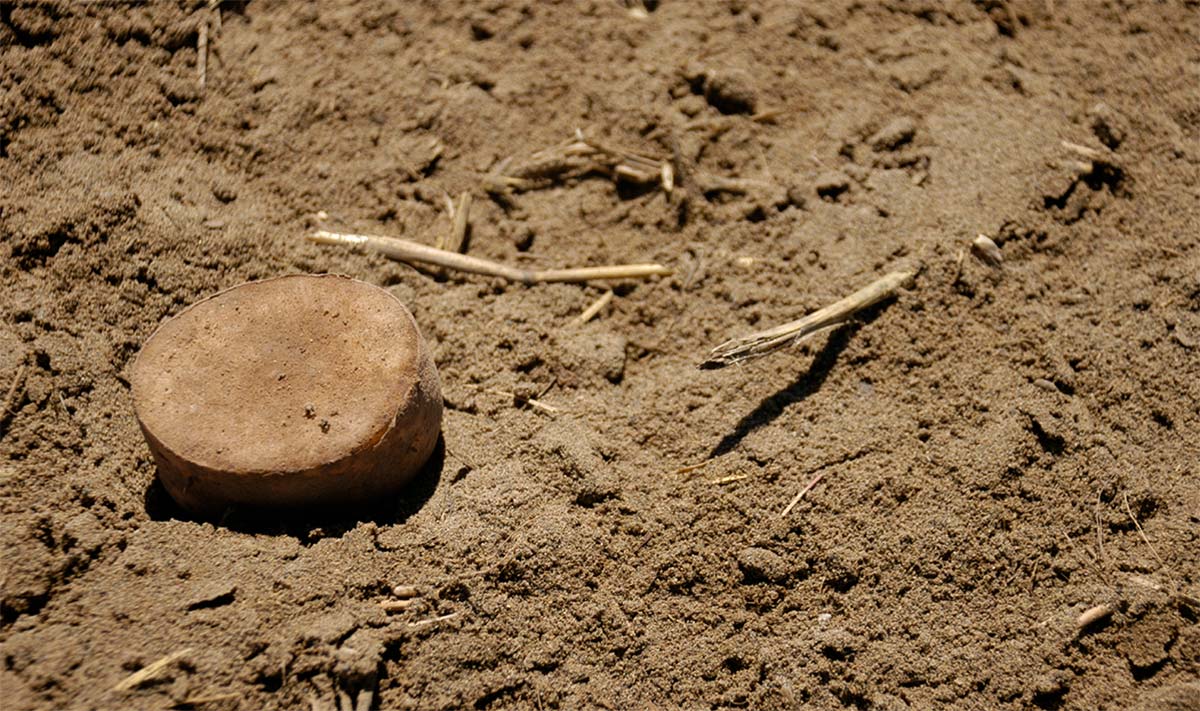
Across North America, seed potato growers and certification specialists are hard at work year-round to help ensure a clean, safe supply of high-quality seed for the potato industry. From coast to coast—and beyond, in some cases—their work pays major dividends for the entire potato supply chain. We reached out to many of the key certification programs on the 2022 seed potato crop and here’s what they reported.
Alexander B. Mkandawire
Potato Seed Certification Manager
California Crop Improvement Association
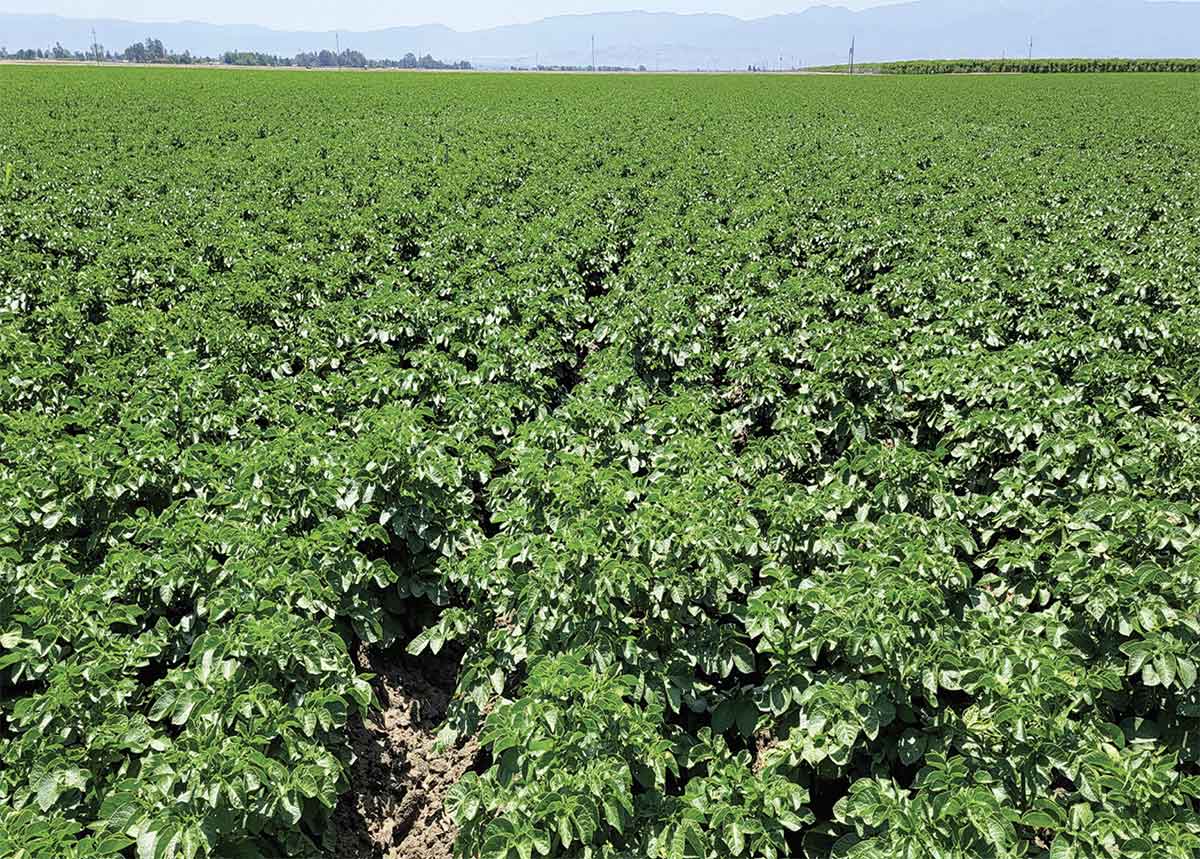
Our California potato seed certification program is comparatively small compared to other programs in the U.S. Certified seed potatoes are produced mainly in the Arvin area, about 15 miles south to southeast of Bakersfield in the Central Valley of Kern County at about 450 feet above sea level, and on the McDonald Island and the Terminus area of the Delta region of the San Joaquin Valley near Stockton, about 30-60 miles south of Sacramento at about 26 feet above sea level. The seed potatoes produced annually in the Tulelake area close to the northern border with Oregon, about 300 miles from Sacramento at about 4,000 feet above sea level, are inspected and certified by the Oregon Seed Certification Service under mutual agreement between our agencies.
Field planting started on Dec. 20, 2021, in about 64 degrees F maximum temperature weather in the Central Valley and ended on Feb. 16, 2022, whereas it started on May 12, 2022, in about 80 degrees F maximum temperature weather in the San Joaquin Valley and ended on June 28, 2022. The Central Valley crop is sometimes hit by frost but it was spared this year. There were no significant rainfall events during the production season and so fields were fully irrigated as usual. The Mediterranean weather conditions [no rainfall and low humidity during the summer] that prevailed across the state were not conducive for disease development, so high quality crops were produced. Our field inspections started on March 31, 2022, in the Central Valley and on May 5, 2022 in the San Joaquin Valley. The last field inspections were completed in San Joaquin Valley on Aug. 31, 2022. The California potato certified seed directory may be obtained via the link https://ccia.ucdavis.edu/application-information/certified-potato-directory.
California’s total production of commercial potatoes was in the region of 30-40 thousand acres in 2022. The average annual production of certified seed potatoes in California has been on about 790 acres for the past five years. However, in 2022 we had a reduction from that average down to 682 acres. On these acres we had a total of 40 varieties in the certification program. One of our major growers decided to stop their potato seed exports due to the shipping bottlenecks that they experienced during the COVID-19 pandemic. Apart from proprietary varieties, the varieties with the most acres were Ciklamen, Sifra, Purple Iris, Gala, and Alegria, in that order.
Andrew Houser
Manager
Colorado Potato Certification Service
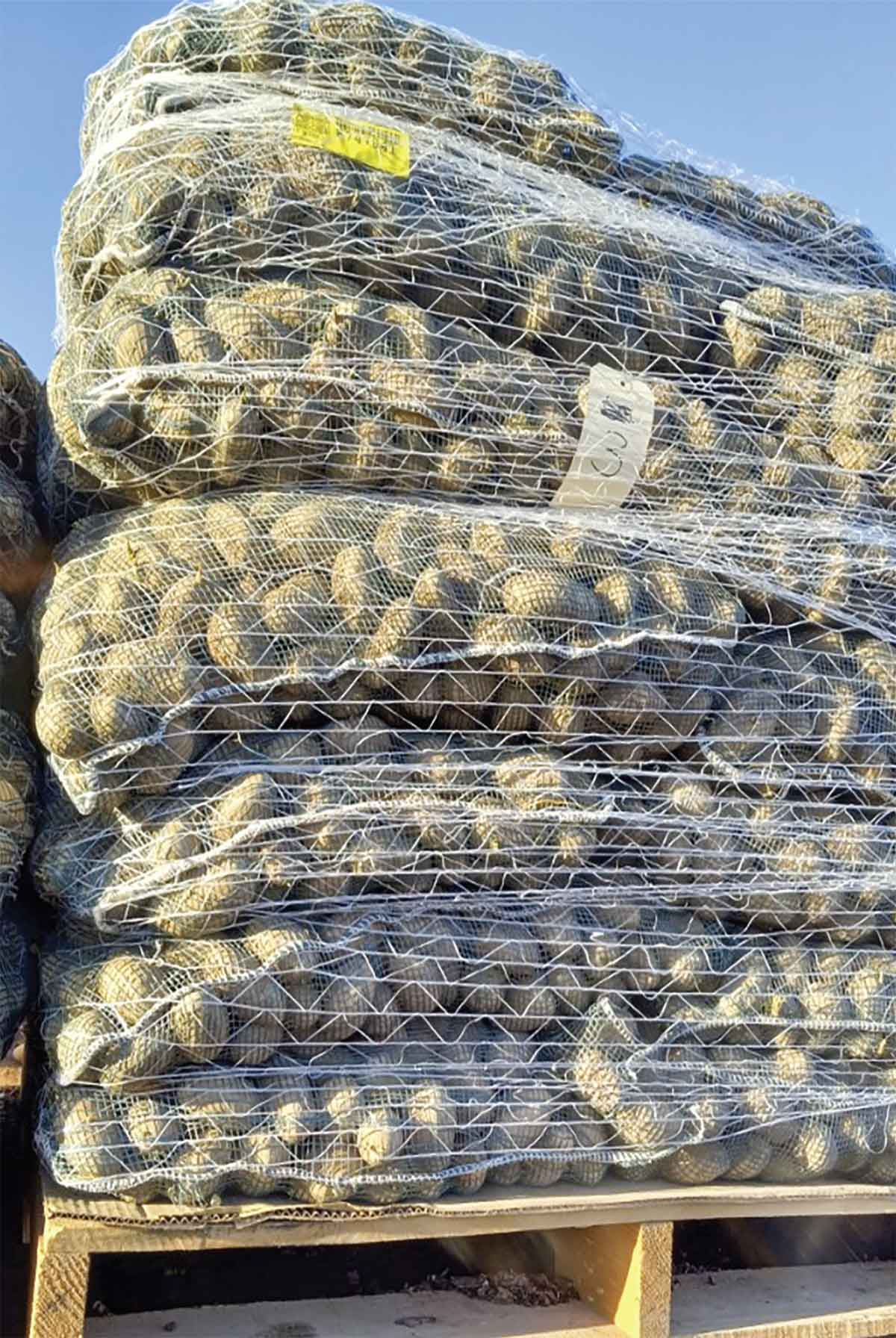
Colorado certified seed potato acreage for sale and grower plant-back was up from 7,784 acres in 2021 to 8,151 acres in 2022. The 2022 accepted certified acreage after summer field inspections was 7,784 acres. Rejections were primarily caused by PVY/Mosaic and blackleg. Total potato acreage in the San Luis Valley was 49,804, up from 48,265 acres in 2021.
The 2022 top five certified potato varieties in Colorado are:
- Russet Norkotah selections (2,502 acres)
- Canela Russet (727 acres)
- Reveille Russet (514 acres)
- Soraya (413 acres)
- Teton Russet (265 acres)
An official 2022 certified seed directory is posted on-line at http://potatoes.colostate.edu/programs/potato-certification-service/crop-directory/. Additional information on Colorado’s Certified Seed can be found on the Colorado Certified Potato Growers’ Association website at www.coloradocertifiedpotatogrowers.com.
All seed lots imported into Colorado are required to undergo a Post Harvest Test, a lab test for PVYN, and a lab test for late blight to comply with the late blight quarantine for all seed coming into the San Luis Valley.
Alan Westra
Southeast Area Manager
Idaho Crop Improvement Association, Inc.
These cool temperatures continued well into June. While the cool weather helped to mitigate concerns regarding potential water shortages, it also significantly delayed emergence and retarded plant growth. Temperatures became more seasonable in late June/early July, but the increase in temperature was not sufficient to make up for the early shortfall in heat units. As a result, Idaho effectively lost two weeks of the growing season.
To date, harvest has proceeded at a normal pace with many growers now nearing completion. Seed quality going into storage is reported as excellent.
Generally, the 2022 seed potato crop can be described as having a high set and smaller than normal size profile. As might be expected, yields are generally lower due to the smaller tuber size.
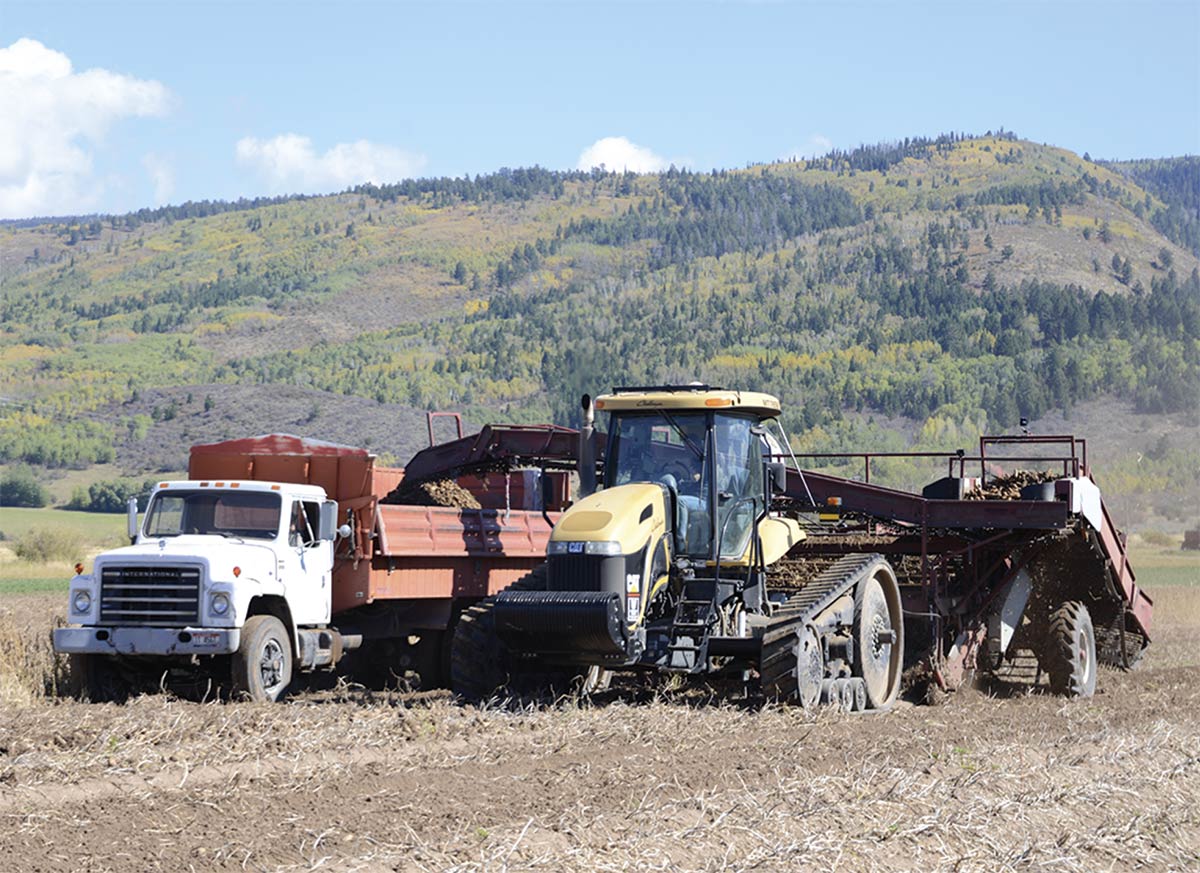
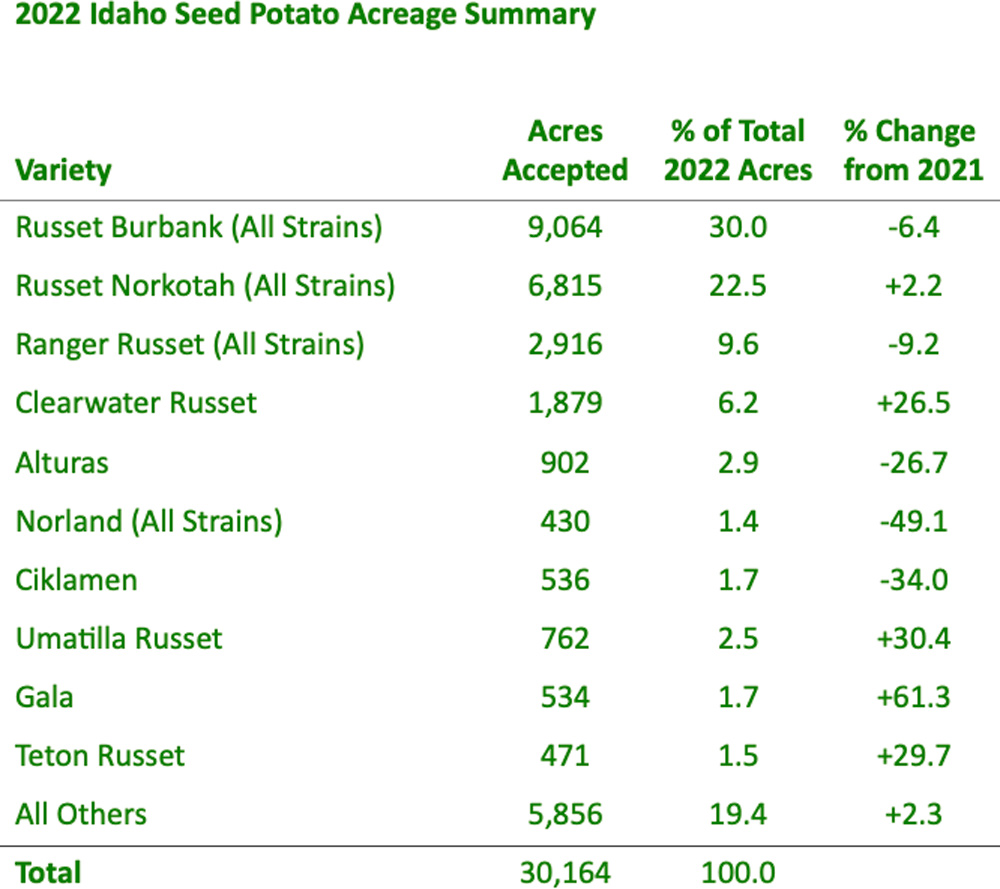
Seed health is also good this year. During summer inspections, the number of seed lots with visually detectable levels of PVY decreased compared to 2021, and remains well below the 10-year average of 7.8 percent. Blackleg levels were normal and there were no detections of potato leaf roll or bacterial ring rot again this year.
Seed potato acreage eligible for final certification totaled 30,164 acres this year, a 2.5 percent decrease from 2021. Excluding proprietary genetics, this acreage represents a total of 103 varieties, selections and advanced clones. Ten varieties account for more than 80 percent of the total acres, with Russet Burbank, Russet Norkotah (all strains), Ranger Russet, Clearwater Russet, and Alturas continuing as the dominant varieties.
A summary of Idaho seed acres and varieties for the last five years is attached to this report. A complete listing of this year’s seed potato crop is available in the 2022 Idaho Certified Seed Potato Directory. This directory is posted on the Idaho Crop Improvement, Inc. website at www.idahocrop.com. Hard copies of the directory can be obtained by contacting the ICIA Idaho Falls office.
Eric Hitchcock
Seed Certification Program Manager
Maine Department of Agriculture, Conservation & Forestry
Overall, the 2022 crop appears to be healthy with low to moderate disease levels. As of Sept. 20, 2022, the certification program has 9,711 acres field certified from 80 farms.
The top 5 varieties by acreage field certified for 2022 are:
- Caribou Russet (PVP) 1329 acres
- Atlantic 11 acres
- Russet Burbank (MT) 708 acres
- Waneta (PVP) 607 acres
- Lamoka (PVP) 559 acres


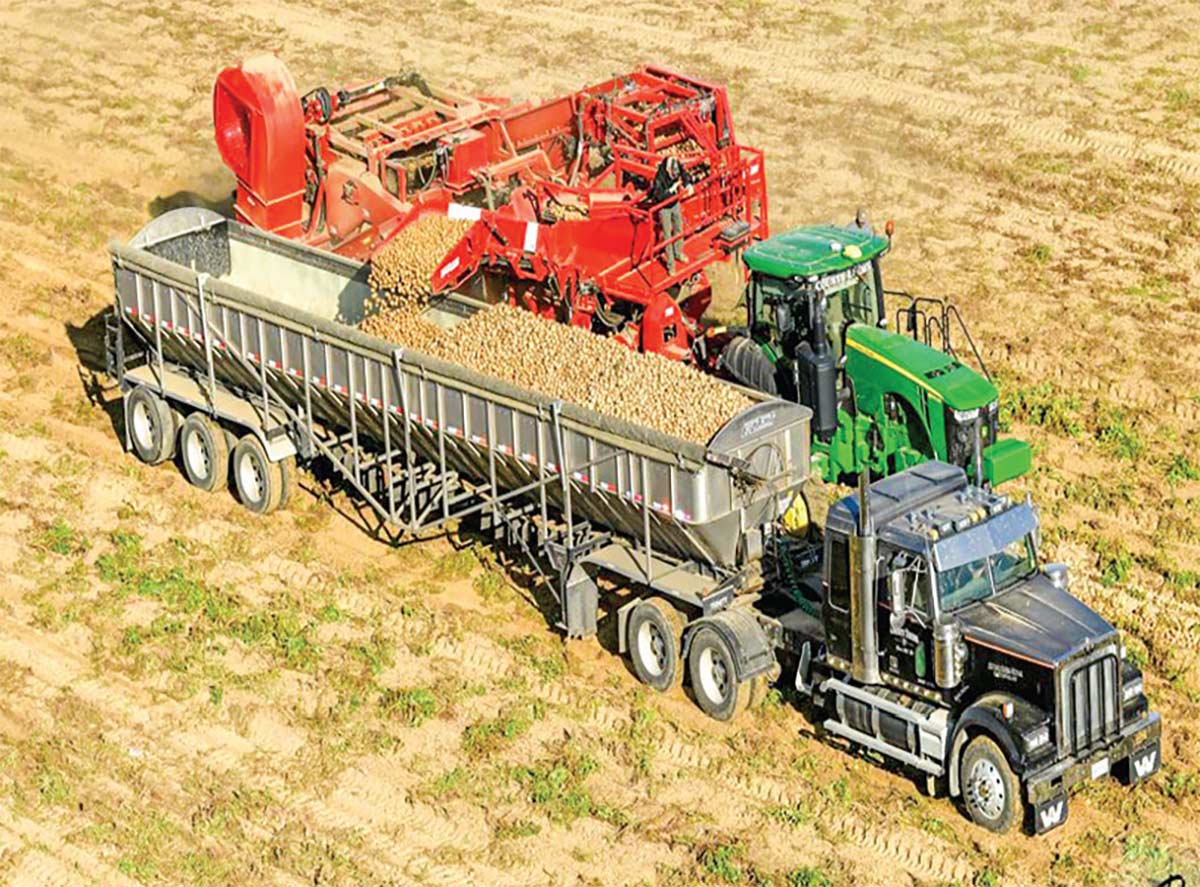
Inspectors are now performing PCN soil sampling and are in preparation for laboratory PVY/PLRV post-harvest testing. All samples will be ELISA post-harvest tested at the certification laboratory in Presque Isle.
Nancy McBrady is the director of the Bureau of Agriculture, Food and Rural Resources for the State of Maine Department of Agriculture, Conservation and Forestry. Amanda Beal is the commissioner of the State of Maine Department of Agriculture Conservation and Forestry.
Damen Kurzer
Executive Director
Michigan Seed Potato Association
Michigan shipped 526,000 cwt. of seed from the 2021 crop this winter and has 2,535 acres that have been submitted for certification in 2022, up 46 acres from 2021.
Chipping varieties, both public and proprietary, make up 74 percent of the 2022 Michigan crop. Russets account for 19 percent of that, with the remainder being various varieties of tablestock including the newly named and licensed Bonafide, which was developed at Michigan State University. Growing interest in Mackinaw, and also from MSU, saw the chip variety increase to 175 acres from 107 in 2021.
The planting season was favorable this year and operations began early for many growers. The growing season was marked by an especially dry June and July, prompting increased irrigation efforts. Seed health has been especially good with average or below average levels of PVY and Black Leg and no detections of bacterial ring rot or late blight again this year.
Despite heat and scattered rains causing operations to be stop-and-go, the harvest progressed steadily after Labor Day and finished the week of Oct. 3.
With harvest inspections wrapped up, the Michigan Seed Potato Association has begun its preparations to return to Hawaii this year for postharvest testing of all lots in the certification program and is cooperating with the Michigan Department of Agriculture and Rural Development to conduct PCN testing for international shipments.
Eric Byre
Supervisor
Plant Protection Program, Minnesota Department of Agriculture
Seed potato growers in Minnesota applied to certify 8,846.23 acres for the 2022 crop year, an increase from 5,685.75 acres in the 2021 crop year. In total 6,533.31 acres were certified when subtracting 7.82 experimental acres and 2,305.10 acres rejected for severe mosaic, varietal mix, vine killed prior to third inspection and not meeting eligibility requirements. Russet Burbank remained the variety with the most acres planted. The spring was cool and wet, delaying planting throughout the state. Most certified seed potato growers began planting in late May, finishing in mid to late June. The Minnesota Department of Agriculture (MDA) inspectors were busy, with three inspections conducted on all certified seed potato lots.
The summer provided good growing conditions and average rainfall, but the fall provided less rain and was drier. The drought conditions during this period affected some quality and yields and delayed harvest some days. Overall, growers reported the harvest produced average to below average yields statewide with good quality.
The MDA Potato Inspection Unit uses a generation system and remains vigilant in detecting potato virus and other disease. The Certified Seed Potato Program continues to honor the USDA Animal and Plant Health Inspection Service memorandum of understanding for Necrotic Virus Management Plan.
The Minnesota Department of Agriculture will be conducting the Post-Harvest Winter Test on the North Shore of Oahu, Hawaii, again this year. Samples were collected in October at the office in East Grand Forks. The samples will be planted, and each lot observed visually for stand, vigor, and potato virus. All positive potato virus visual observations are confirmed with a laboratory test. Once complete, the results will be communicated to the growers and industry.
For copies of the Minnesota Certified Seed Potato Directory visit the Minnesota Department of Agriculture website at www.mda.state.mn.us.
Nina Zidack
Director
Montana State University Seed Potato Certification Program
The growing season presented challenges, particularly with the very cool June followed by hotter than average temperatures in July and early August. These conditions led to a delay in tuber bulking in some varieties. Some growers delayed vine kill 7-10 days to allow the potatoes to bulk adequately at the end of the growing season. Overall, Montana growers are very pleased with their crop and anticipate an excellent grade out in the spring.

Umatilla is now the third most widely planted variety at 1,542 acres followed by Ranger Russet at 1,295 acres and Alturas at 722 acres. If you count the acreage of all Norkotah lines together, it would actually jump into the third spot at 1,480 acres. Of the Norkotahs, the Texas 278 line has the highest acreage at 556 acres followed by Colorado 3 (304 acres), Texas 296 (289 acres), Texas 112 (244 acres), standard Norkotah (45 acres), and Northwest 90 (42 acres). The variety that is quickly rising in acreage is Hamlin Russet, which was first planted in 2020 and is now at 97 acres. Ivory Russet, which was first grown in Montana in 2016, rose in acreage very quickly to 271 acres in 2020. It has since decreased in acreage to 169 acres for the 2022 crop. Chip varieties are a minor component of Montana’s production and Lamoka, Atlantic and Snowden combined are 114 acres. The most widely planted colored variety is Norland Dark Red at 110 acres.
Adam Winchester
Manager
Potato Certification Association of Nebraska
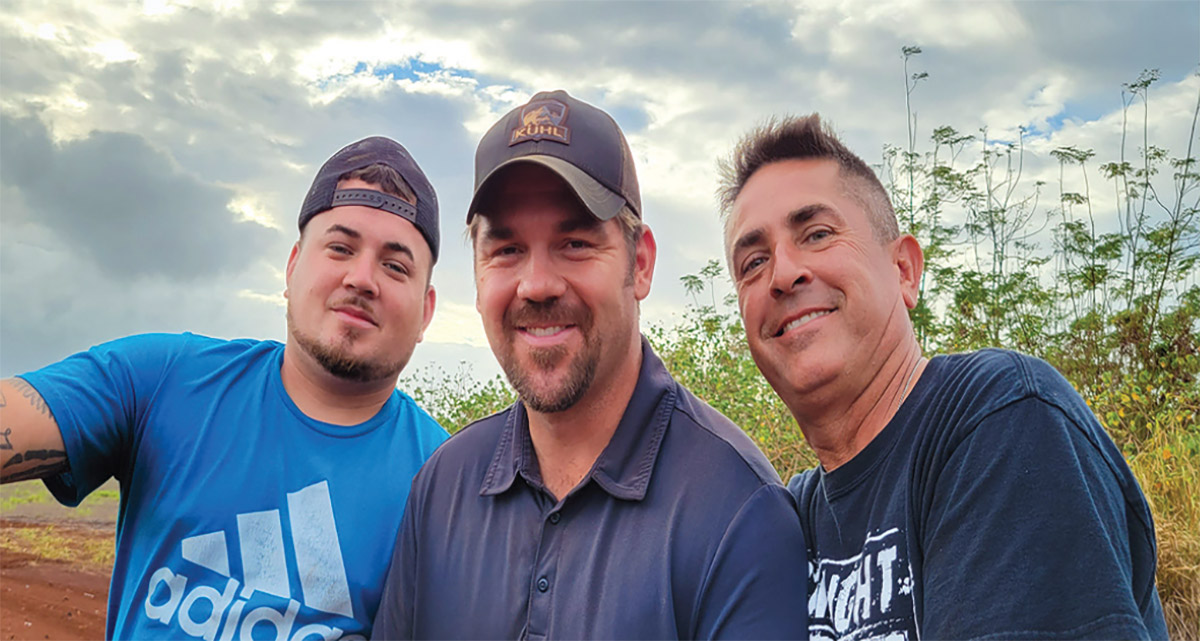
In 2021 average yield/acre was 339 cwt. In 2022 7,559.07 acres (356 lots) were entered for certification. A total of 2,382.19 acres (47 lots) were removed prior to entry into the post-harvest test for use in the commercial industry. The Potato Certification Association of Nebraska will no longer be conducting bin inspections as part of its quality control regimen. The focus, instead, will be directed towards BRR testing; PCR tests will likely commence again for the 2023 crop.
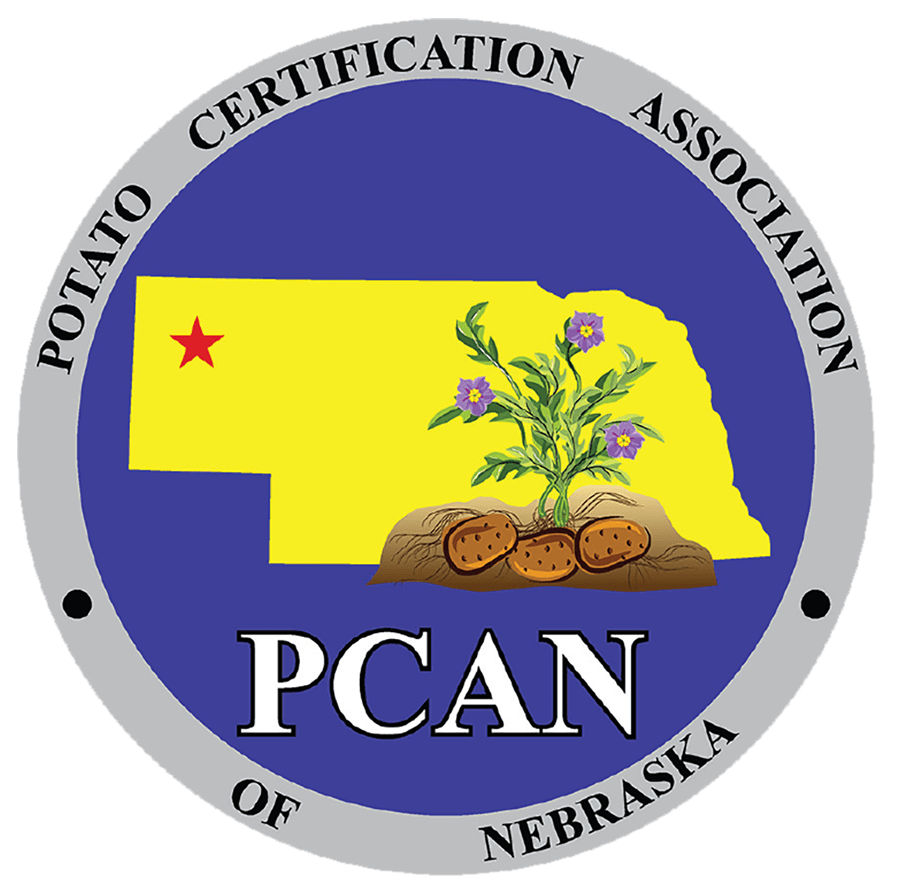
Nebraska is conducting its post-harvest test in Waialua, Hawaii, this year. Planting was conducted between Nov. 3 and Nov. 5. Two hundred seventy-four lots were entered into the grow out portion of the post-harvest test. We will return from Dec. 4 until Jan. 4 for readings and virus testing.
The Potato Certification Association of Nebraska is participating in a study with Nora Olsen and Nathan Gelles of the University of Idaho utilizing smoke to break dormancy on seed potatoes. Considering the challenges facing our supply chains, we are hopeful that the results of these trials will help the seed potato industry find potential replacements for the chemicals currently in use.
Kent Sather
Director, Potato Programs
North Dakota State Seed Department
The top five varieties were:
- Norland strains: 2,329 acres
- Umatilla Russet: 1,749 acres
- Dakota Russet: 1,713 acres
- Ranger Russet: 1,217 acres
- Dakota Pearl: 952 acres
Seed lot leaf samples as required or requested were tested for PVY and PVX. Results matched field inspection notes. Mosaic levels observed were zero or very low. Inspectors continued to look for Dickeya dianthicola symptoms. Suspect plants were lab tested. No positives have been confirmed. Additional tuber screening for Dickeya will be done at a grower’s request.
Phytophthora infestans was a minimal threat this year. Even so, growers were encouraged to use proactive fungicide applications. No late blight was found during inspections in certified seed lots. Growers were also attentive to aphid counts, and were encouraged to use protective oils, insecticides, and vine kill as early as possible.
Early generation seed lots planted in isolation inspected free from viruses. These seed lots provide the basis for future North Dakota seed production. North Dakota State Seed Department seed stock staff harvested an excellent greenhouse minituber crop in June and October, providing a clean seed source for future crops of certified seed. 2022 North Dakota Seed Directories can be obtained by calling the North Dakota State Seed Department at (701) 231-5000 or at www.nd.gov/seed/.
Tami Brown
Certification Specialist
Oregon Seed Certification Service

The 2022 spring season was very wet and greatly tried the patience of some of our growers in Oregon. Due to rains and cool weather, some lots were very late in planting. This in turn stretched the inspection season so the inspectors were required to take more trips but had fewer lots per trip to inspect. Two growers dropped out of the certification program for the 2022 season due to water issues. Fortunately, the start of fall has been very pleasant and ideal for a successful harvest for the most part.
Oregon certified 3,082 acres of potato seed in 2022 (pending harvest inspections and post-harvest testing). That’s a slight increase over 2021. There were zero lots rejected or withdrawn for any reason. Only one lot was downgraded for off-type and very little disease or other issues appeared to affect the growing season.
The variety Clearwater Russet was again the No. 1 single variety produced in Oregon this year at 466 acres. Ciklamen and Gala have increased acres each year and this year were No. 1 and 2 on our listings. A complete listing of the varieties and acres produced in Oregon, as well as more details on the field readings, can be found on our website at http://seedcert.oregonstate.edu/potatoes under “Seed Report and Directory of Growers” and “Oregon Certified Seed Potato Field Readings and Statistics.”
As indicated by the change in authors of this article, Jeff McMorran, who has led the potato program for more than 20 years, has decided to retire. His official retirement will be this winter; however, in preparation he handed the program over to me to learn as much as I can. I have worked in the potato program since I started with Oregon Seed Certification Service seven years ago. I very much enjoy the crop and the growers I get to work with.
Benita Matheson
Plant Services Supervisor
Washington State Department of Agriculture
Top varieties grown included Ciklamen (557 acres), Russet Burbank (307 acres), Chieftain (277 acres) and other proprietary varieties. A complete report on seed lots will be posted here Seed Potato | Washington State Department of Agriculture.
The total acres planted include 133 different potato varieties ranging in size anywhere from partial-acre plots to 68-acre fields. Most seed lots are less than 20 acres and include numbered clones, table stock, processing and heirloom varieties.
This year, in the Whatcom County isolation district, many fields were planted at the beginning of the planting season, before extended rain and flooding. Growers experienced partial or total crop flood-out and lots were plowed under. After flood and rain abated, planting was completed, but very late in the season which resulted in a short growing season for many lots. Very little precipitation occurred during the actual growing season, resulting in very dry soil and required irrigating killed/shredded fields immediately prior to harvest. Harvest weather to date has been dry and cool.
Harvest should be finished by late October. Yields are noted to be fair and average. WSDA noted few instances of external damage to the tubers. Seed shipments to southern climates will begin in late fall and continue into the winter months, with the majority of seed to be shipped in early spring. Washington State Certified seed growers are in the process of submitting seed lot samples for the post harvest test that will continue in Hawaii.
Brooke Babler
Certification & Research Manager
University Wisconsin-Madison
Wisconsin seed potato growers entered 9344.5 acres for certification during the 2022 growing season. Acreage was down 198.63 acres from 2021, but slightly above the 9,295.30-acre average from 2018 to 2020.
Varieties remain strongly oriented toward chips, with Atlantic, Lamoka, Snowden and proprietary varieties leading the list of top varieties. An acreage increase was seen for both chipping varieties, Manistee and Mackinaw. Silverton russet remains a strong fresh-market russet; however, interest in Caribou and Lakeview russets continues to grow.
Planting operations this season occurred later due to an unseasonable cool spring with a mid-to-late May planting start date. As the season progressed, the state experienced a very dry period leading to an increased need for irrigation. Vine-killing was performed as expected based on previous years.
Harvest season was dry and warm in Wisconsin; however, growers were successful in finishing digging by mid-October. Yields for many growers were reportedly average to slightly below average. Wisconsin Seed Potato Certification inspectors observed excellent tuber and quality and size across most seed potato lots. The Wisconsin post-harvest test will be returning to Hawaii.
Stacey Bajema
Seed Potato Coordinator
Potato Growers Of Alberta

Alberta growers planted 14,400 acres of seed potatoes in 2022. The growing season was quite variable depending on location, but overall we finished with average yields. Producers had a great start to the season with great moisture and optimal planting conditions. However, once August came along, things started to dry up and moisture came primarily through sporadic storms leading to inconsistent moisture within growing areas.
Some growers filled their storages while other growers in similar areas growing the same varieties struggled to size up. Harvest weather was beautiful and quality going into storage was good in all areas.
Alberta operates a comprehensive spore trapping and insect monitoring program throughout the season as a preventative measure against disease. Now that the seed is in storage, samples are being processed for post harvest testing. All samples for export are tested for PCN and all lots that leave the farm are tested for Bacterial Ring Rot. Once again, Alberta has sent samples to Hawaii for grow-out with most of those lots also being leaf tested. The last couple years of the grow-out has seen no positive samples for virus and we are hoping for the same again this year. Growers also send seed samples direct to CFIA certified labs for ELISA virus testing and can customize testing to the customer’s needs and their location’s growing requirements.
Alberta Seed Growers grow around 200 varieties each year. Though we grow a lot of fresh and specialty varieties, most of our seed production is processing varieties. Seed from Alberta is especially known to be free of disease and high in vigor. The Alberta Seed Potato Directory is now available at albertapotatoes.ca.
Bill Moons
Seed Potato Growers of Manitoba
After two years of dry growing conditions, 2022 had sufficient rains to produce good quality and yield under both irrigated and non-irrigated scenarios. Snow melt and spring rains resulted in delayed planting but a wide-open fall resulted in good harvest conditions with a sufficient number of days to achieve good yields.
Some irrigation was utilized when needed but needs were not excessive. Manitoba also experienced good potato growing temperatures in 2022 with only short, intermittent periods of high temperatures.
Certified seed potato acres for 2022 were 6,627. These acres included varieties for french fry processing, the chipping industry and numerous table stock varieties. Almost all the french fry seed acres are produced with irrigation to ensure consistent yield and quality. Irrigation is also utilized in the other sectors.
Regardless of the infestation level of aphids, growers start using aphid oils early and often and then combine the oils with insecticides, if aphids appear, to maintain low virus levels in the province. Aphid populations are monitored locally as well as keeping an eye on populations to the south of us. Aphids do not over winter in Manitoba. There were no detected late blight incidences in 2022. This, along with a diligent late blight protectant program makes us confident that it will not be a problem for the 2022 seed crop. Other foliar diseases were not significant and were well managed with timely foliar fungicides.
The seed crop was harvested without concerns of frost and to this point it is storing well.
For a complete listing of varieties and generations available, refer to the Manitoba Seed Potato Directory at www.manitobaseedpotatoes.com.